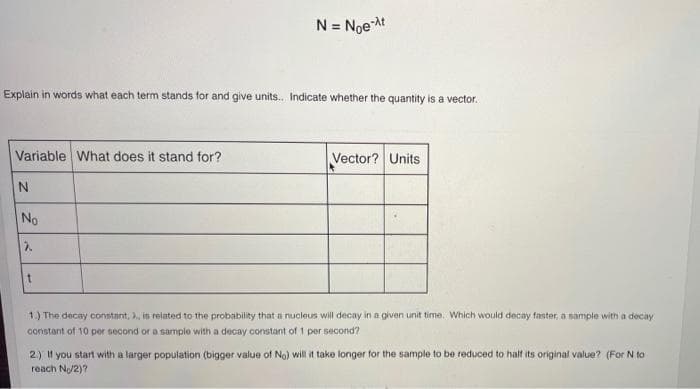1.) The decay constant, , is related to the probability that a nucleus will decay in a given unit time. Which would decay faster, a sample with a decay constant of 10 per second or a sample with a decay constant of 1 per second? 2.) If you start with a larger population (bigger value of No) will it take longer for the sample to be reduced to half its original value? (For N to reach No/2)? 3.) Can you use this equation to determine when a single unstable nucleus will decay?
Nuclear Fusion
Nuclear fusion is a type of nuclear reaction. In nuclear fusion, two or more than two lighter atomic nuclei combine to form a heavier nucleus. During this process, an enormous amount of energy is released. This energy is called nuclear energy. Nuclear fusion is the energy source of the sun and stars.
Fusion Bomb
A fusion bomb is also known as a thermonuclear bomb or hydrogen bomb which releases a large amount of explosive energy during a nuclear chain reaction when the lighter nuclei in it, combine to form heavier nuclei, and a large amount of radiation is released. It is an uncontrolled, self-sustaining nuclear chain reaction where isotopes of hydrogen combine under very high temperature to form helium. They work on the principle of operation of atomic fusion. The isotopes of Hydrogen are deuterium and tritium, where they combine their masses and have greater mass than the product nuclei, get heated at high temperatures, and releases energy.


Step by step
Solved in 2 steps with 2 images









